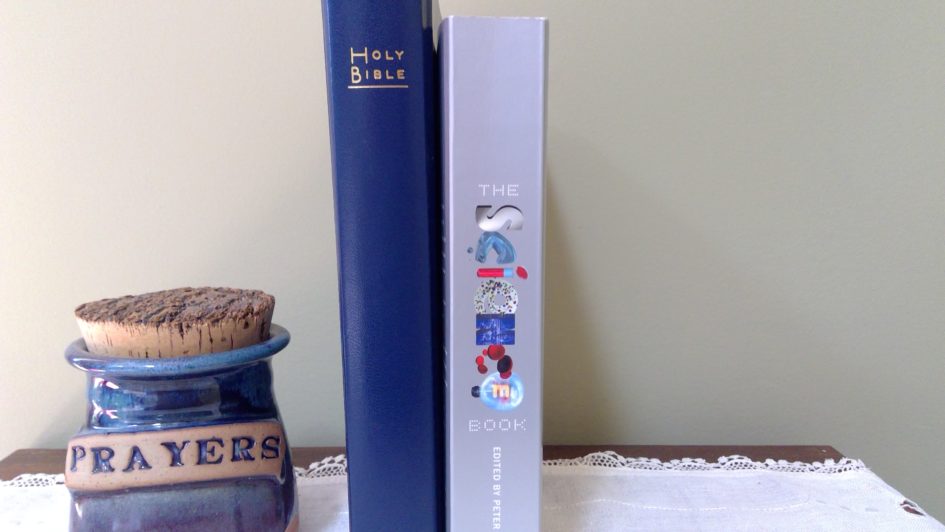Many children and adults alike have trouble reconciling the Bible with science, particularly when it comes to the issue of origins. How does what I learn in science class fit with what I read in Genesis 1 in the Bible? How can there be a God who creates when science can explain so much about how the world works?
For answers to these kinds of questions, I have found it helpful to look to scientist Christians who are both practitioners of biblical Christian faith and preeminent in their fields of scientific inquiry.
Friend and biochemist Sy Garte explains an approach he shares with many other scientist Christians–Two Books Theology. In Two Books Theology, God is believed to have communicated the nature of reality by giving humanity two books, the Book of God’s Words (the Bible, Holy Scripture) and the Book of God’s Works. The Book of Works refers to God’s creation of the natural world as studied through the tools and concepts of science.1
This approach to contemplating nature and the Bible is not new and long predated the advent of science. Theologian Mark H. Mann reminds us that Two Books Theology is rooted in ancient Christian traditions that saw a relationship between God’s revelation in Scripture and God’s revelation in Creation. In a modern context, such a view affirms the scientific enterprise as sacred work.2
Today, scientist Christians like Sy Garte, genetics pioneer Francis Collins, Nobel Laureate Bill Phillips, and a long list of others, practice Two Books Theology as they follow Jesus and explore the scientific mysteries of our world. And what they model for us, we can easily model for our children. How? We can start simply by having a sense of appreciation and wonder for both science and the Bible.
1Garte, Sy. What does “The Book of Works” Mean? Retrieved from https://thebookofworks.com/what-does-the-book-of-works-mean/
2Mann, Mark H. (2012, November 08). The Church Fathers and Two Books Theology: Introduction. Retrieved from https://biologos.org/blogs/archive/the-church-fathers-and-two-books-theology-introduction



September 30, 2018 at 7:41 pm
Very good points, the twofold revelations of God has been taught in the entirety of scripture from the use of natural phenomenon to help us understand God and how God works in our lives, to the pointing of the creation and flourishing of nature to demonstrate the nature and works of God. As the Apostle Paul stated in Romans 1:20 ”
Romans 1:20 Common English Bible (CEB)
20 Ever since the creation of the world, God’s invisible qualities—God’s eternal power and divine nature—have been clearly seen, because they are understood through the things God has made. So humans are without excuse.